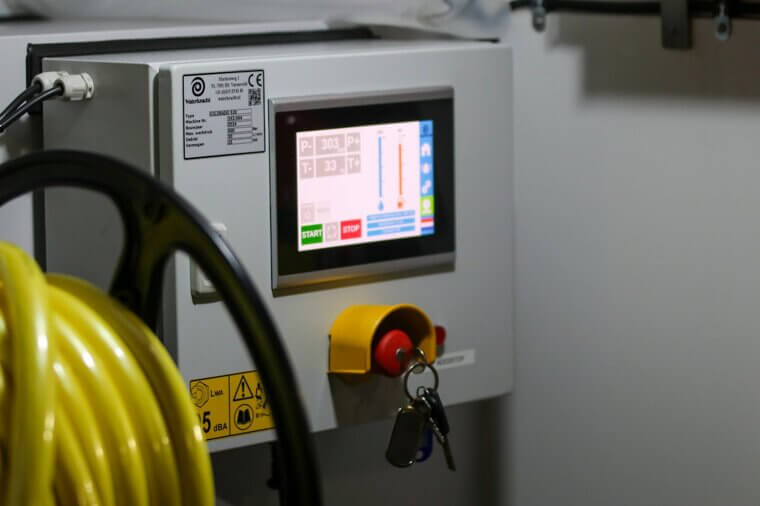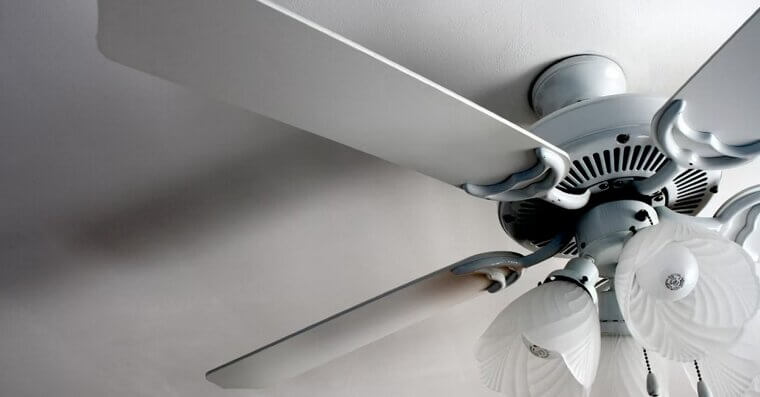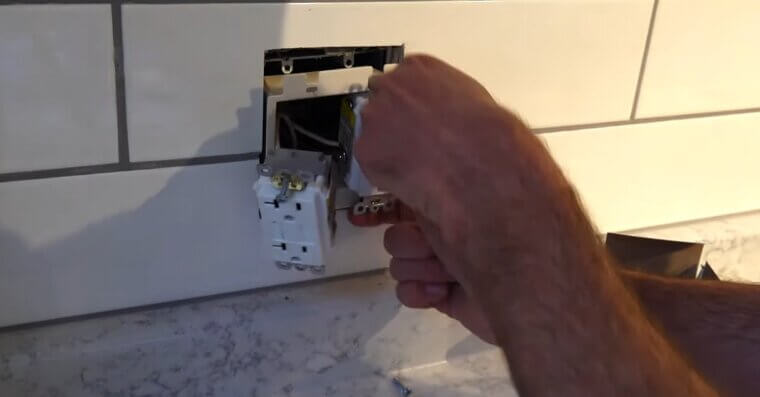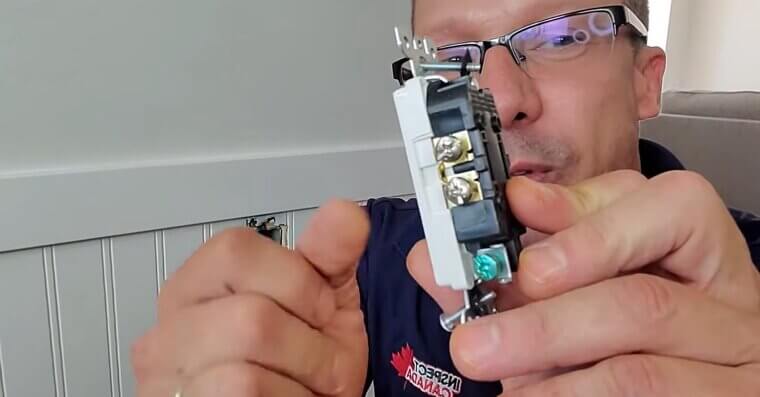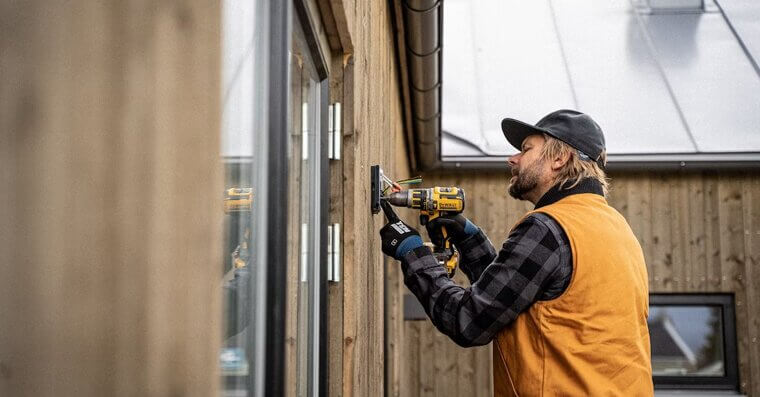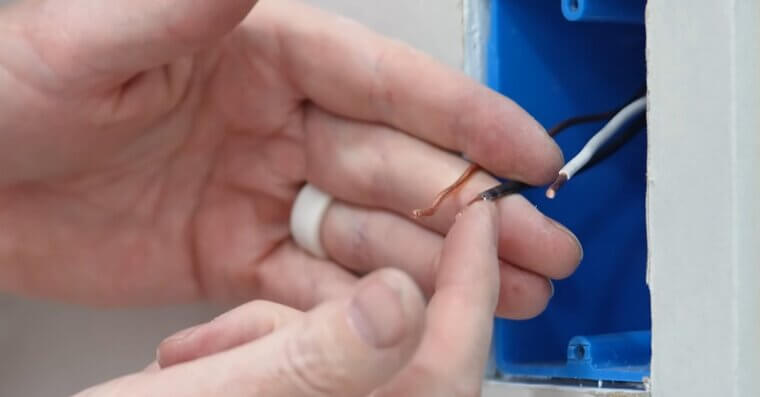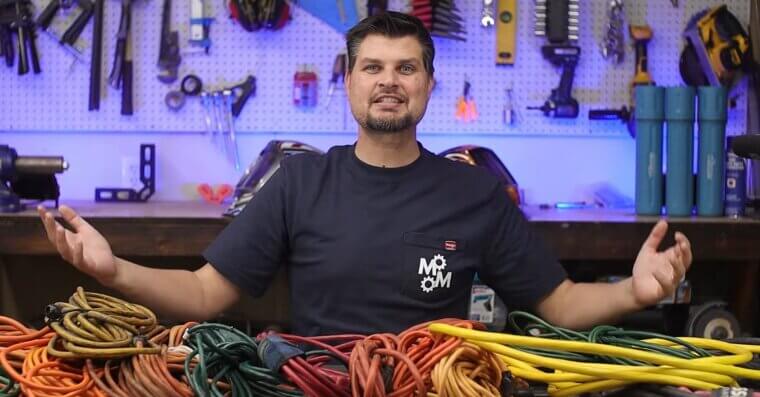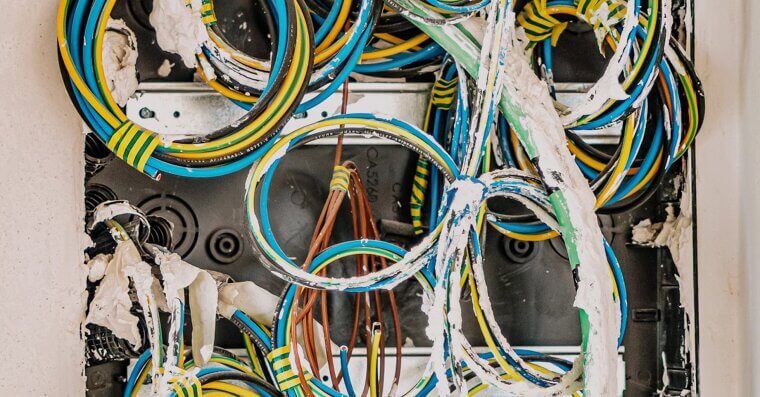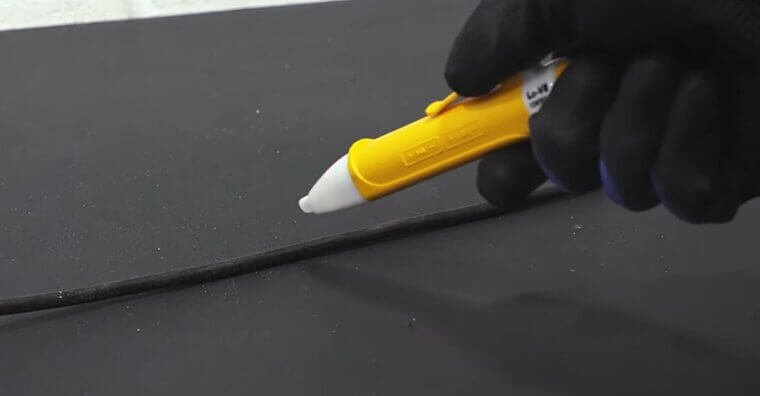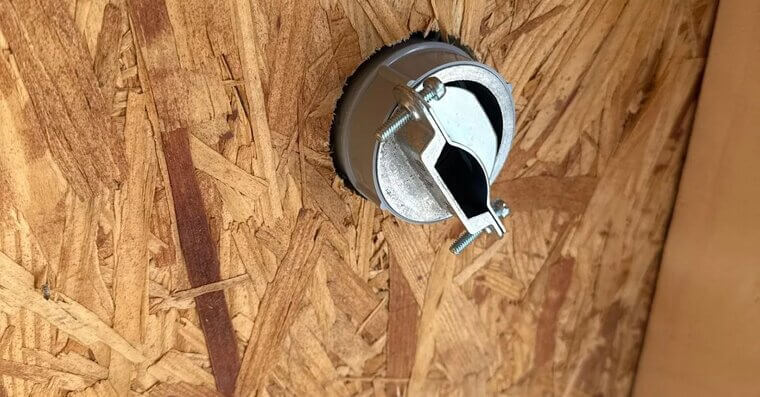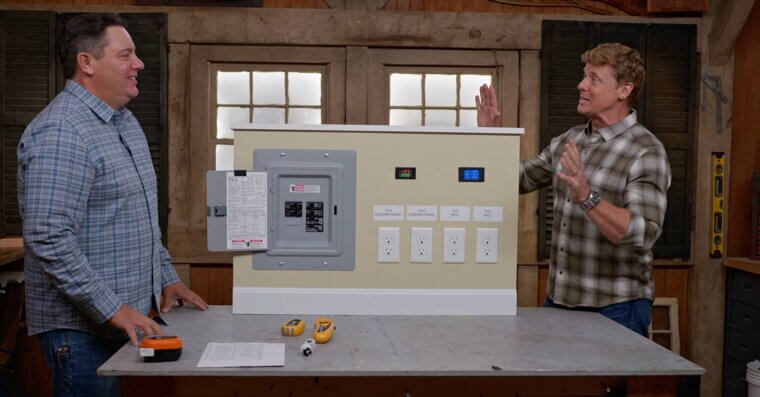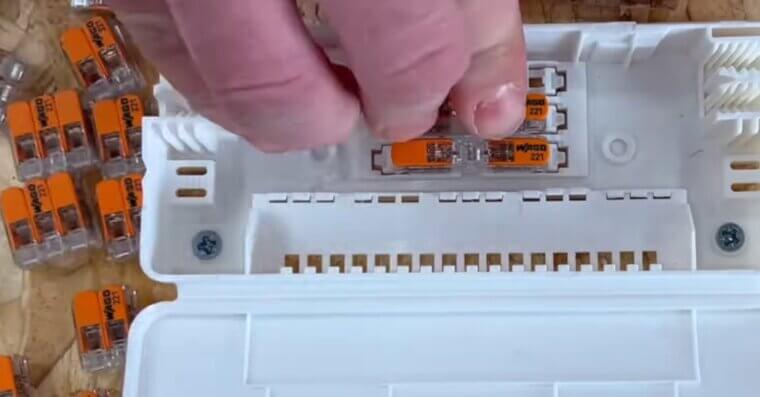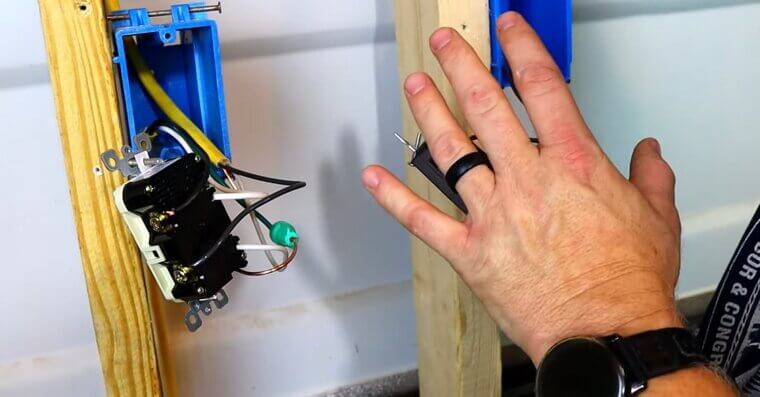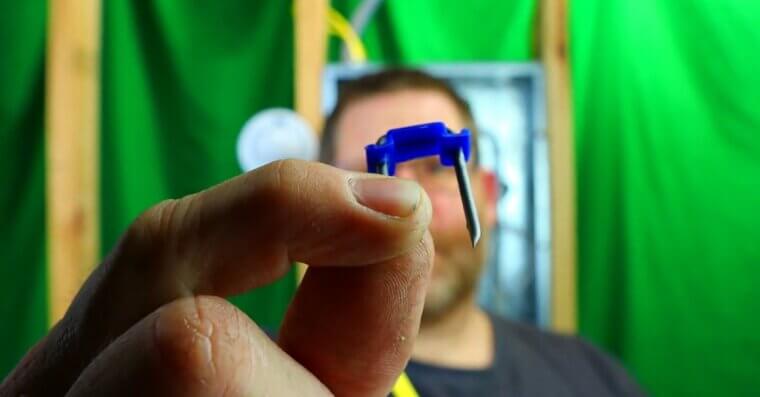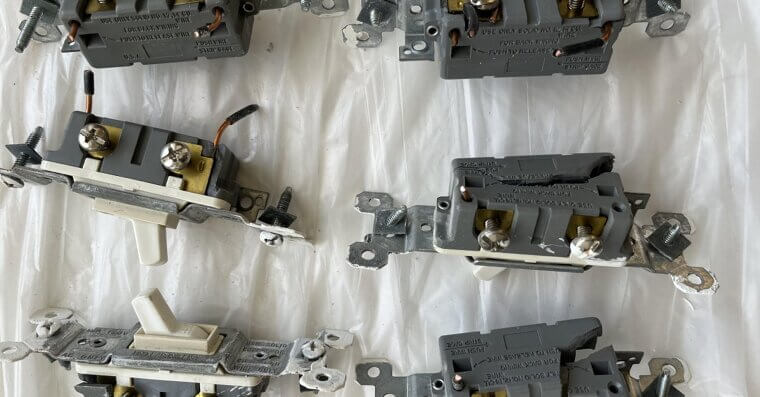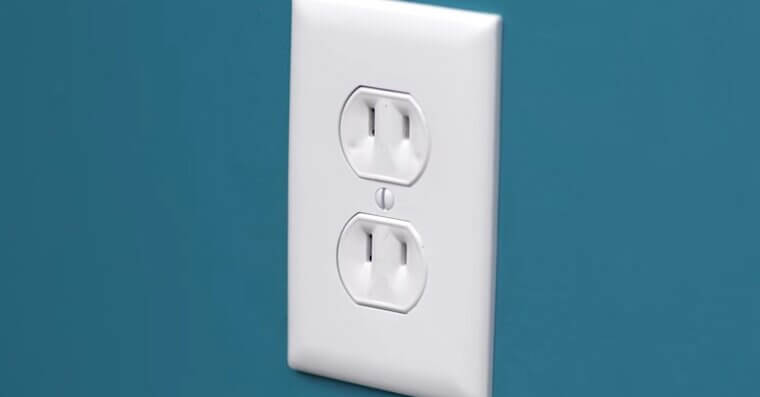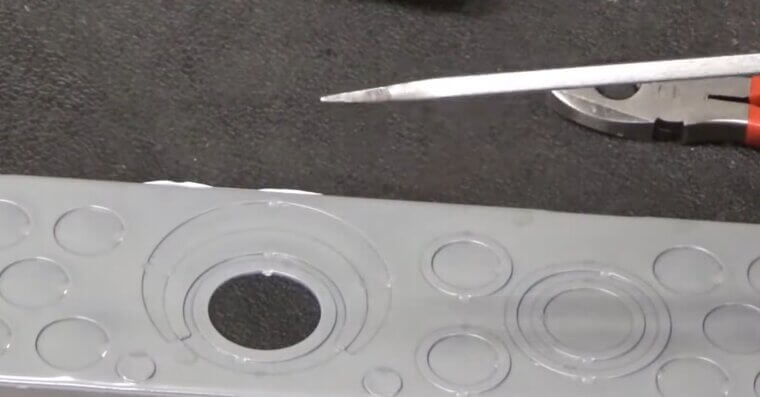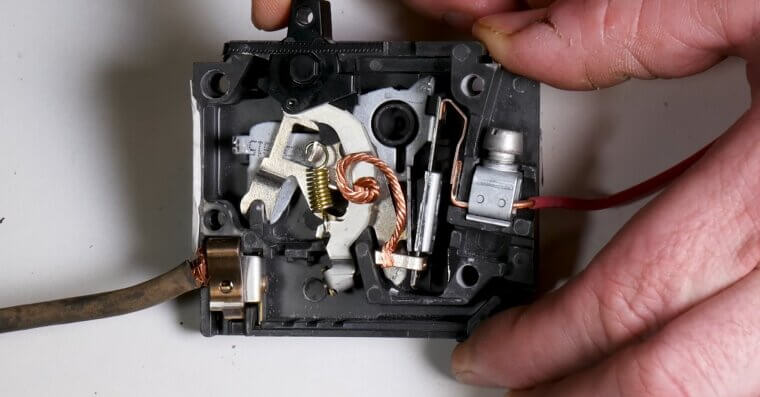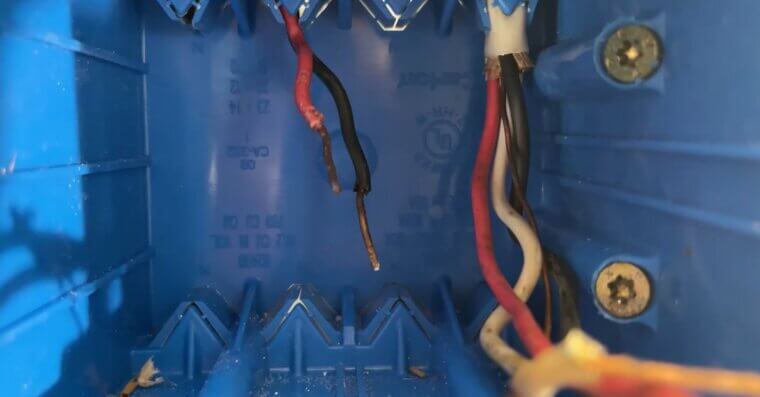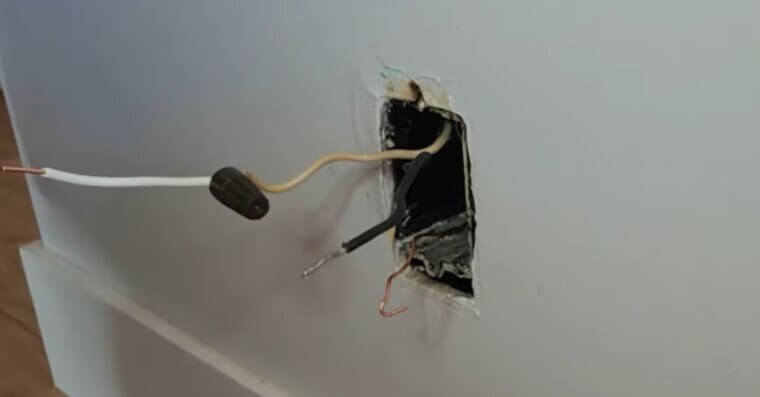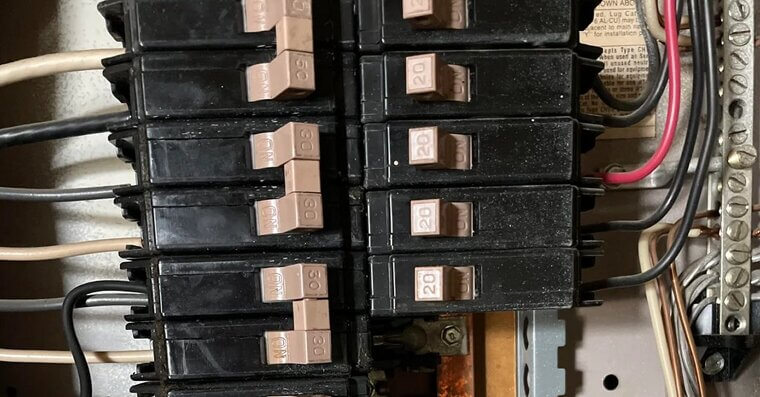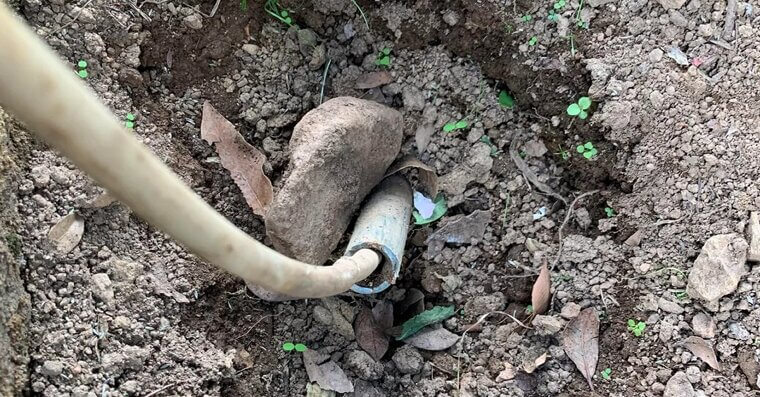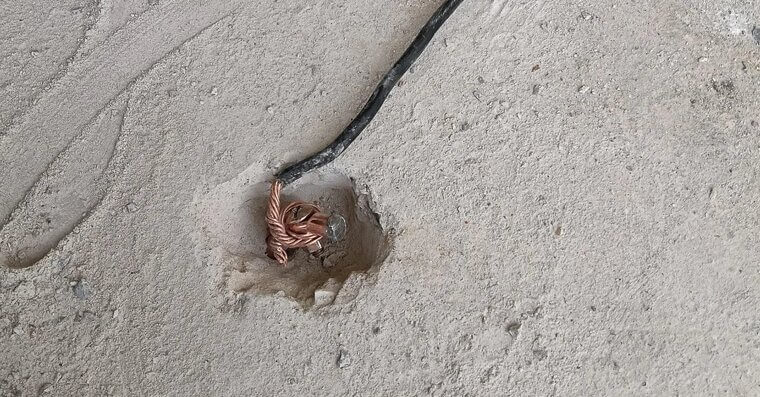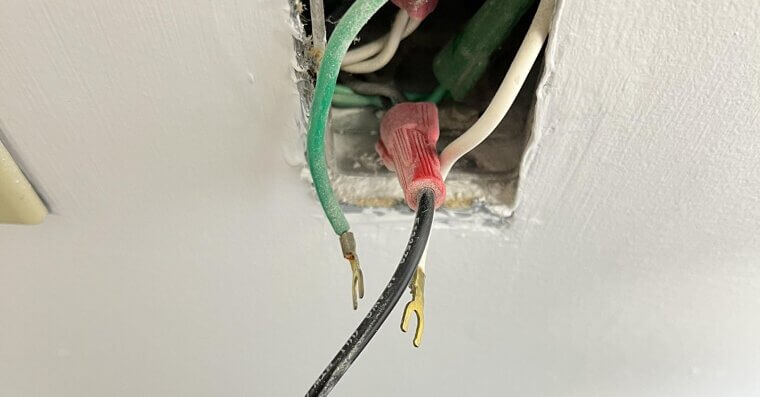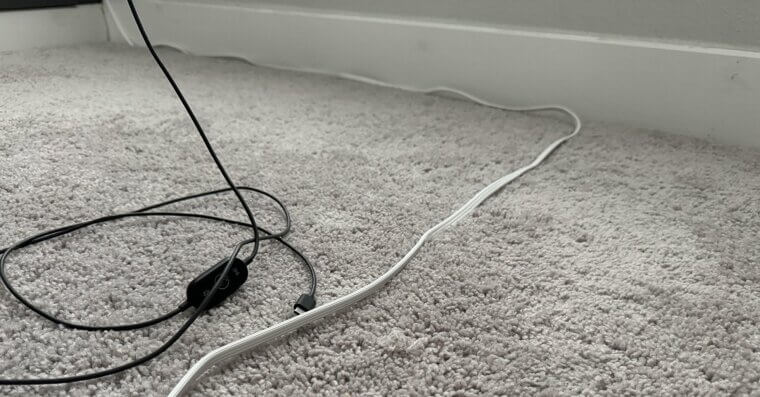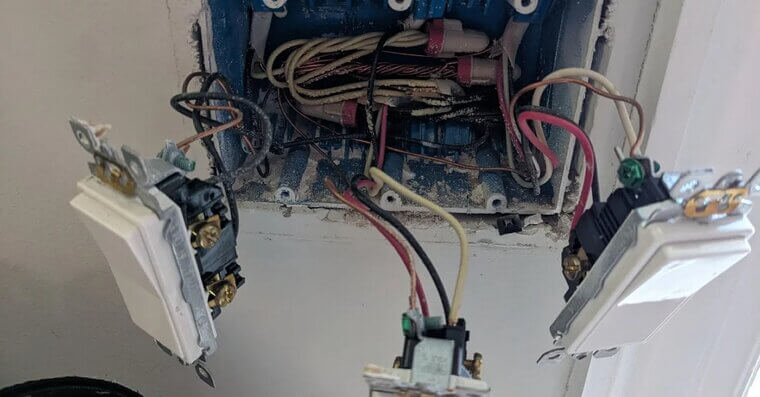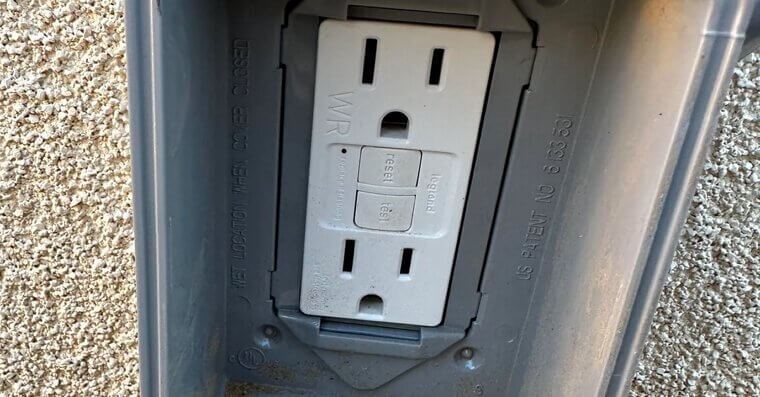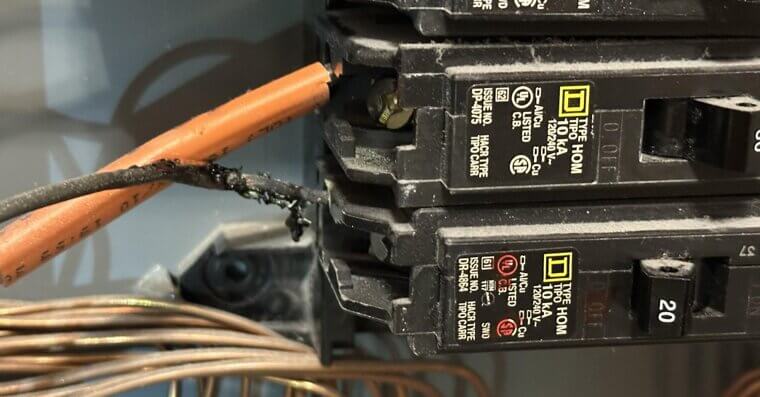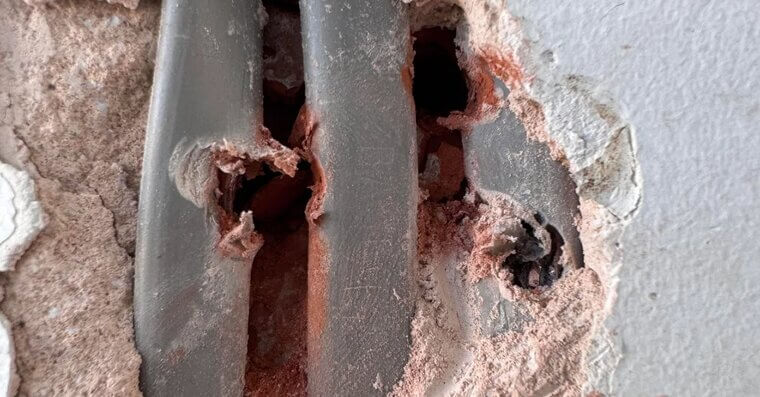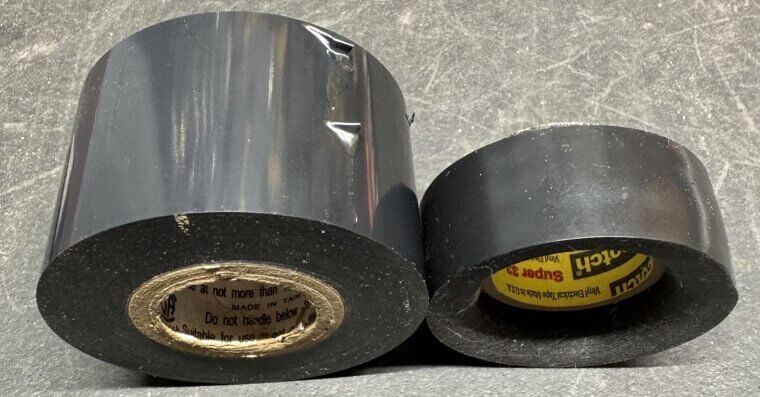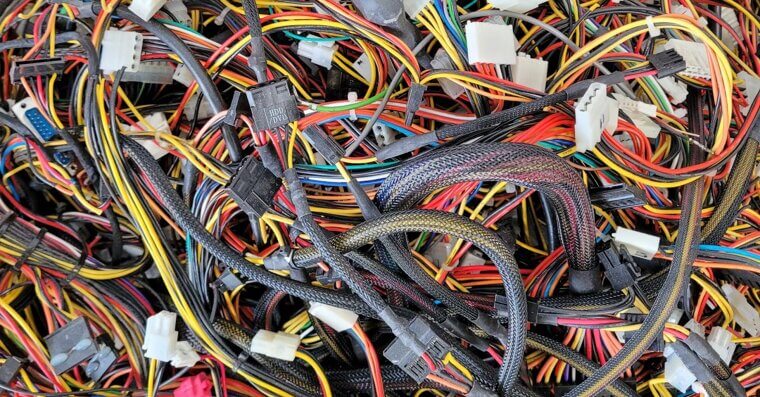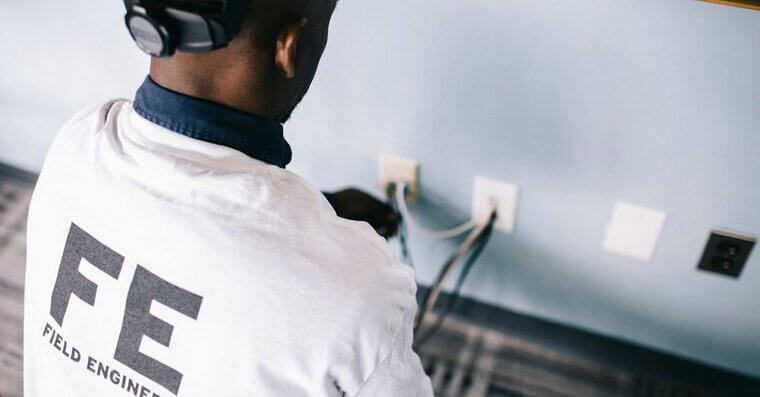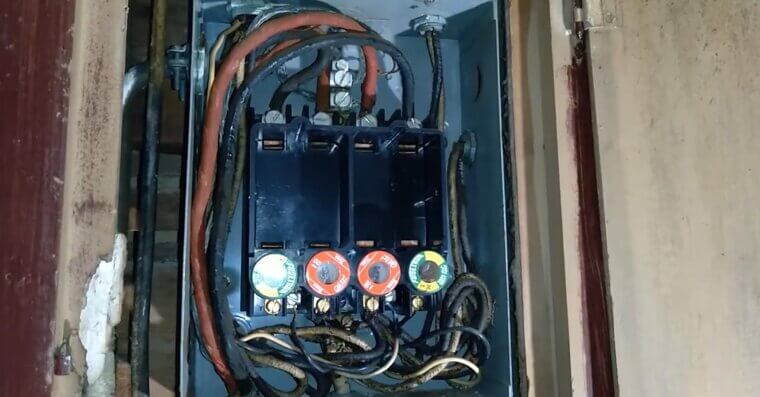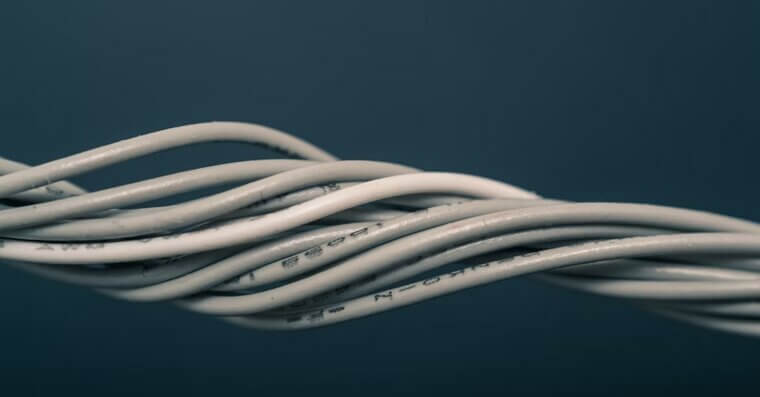Forgetting to Turn Off Power
It sounds obvious, but many DIYers still forget and suffer the consequences. Always shut off the breaker before working - it’s a mistake you may not survive twice.
Installing Ceiling Fan in the Wrong Box
Ceiling fans are heavier than light fixtures. Using a standard box risks that fan falling down at the wrong moment. Always install fans on specially rated boxes.
Recessing Boxes Behind Wall Surfaces
Electrical boxes should sit flush with drywall. If recessed, heat and sparks can hit wood or insulation... and burn down your house.
Reversing Hot and Neutral
Mixing up hot and neutral wires creates dangerous shock risks. Your devices may still work, but the wiring is unsafe and won’t protect you properly.
Over-Tightening Wire Connections
Cranking screws down too hard can damage wires or strip threads. Tight is good - overtight can break the connection or make it unsafe.
Cutting Wires Too Short
Snipping wires too short makes connections a nightmare. Always leave at least six inches extending into the box so there’s room to work safely.
Using Extension Cords Permanently
Extension cords are for temporary fixes, not permanent wiring. Long-term use leads to overheating and wear. If you need more outlets, add them properly.
Using the Wrong Size Conductors
Wire gauge matters more than non-electricans realize. Using undersized wire for appliances causes overheating, which is a big fire risk.
Using a Non-Contact Voltage Tester Incorrectly
Waving the tester around without proper technique can give false, and thus unsafe, readings. Always test on a known live circuit first to make sure it’s working correctly.
Installing Cable Without a Clamp
Running cable through a box without a clamp lets it wiggle and wear. Clamps keep wires secure and prevent sharp edges from cutting insulation.
Not Labeling the Breaker Box
Guessing which breaker controls which outlet is - you guessed it - unsafe. Take time to label the panel correctly, because it’s a lifesaver during emergencies.
Making Connections Outside Electrical Boxes
Electrical boxes exist for a reason - they protect connections. Leaving splices hanging in walls or ceilings is both unsafe and a major fire hazard.
Using Too Many GFCIs and AFCIs
One GFCI or AFCI per circuit usually does the job. Stacking multiples just wastes money and creates frustrating, unnecessary tripping issues.
Running Wires Without Staples
Loose wires sag or get damaged. Staples and straps keep everything neat, supported, and in line with electrical code.
Screw Terminals
Those push-in “backstab” slots on outlets are tempting but unreliable. Screwing wires under the terminal is more secure and prevents loose connections down the road.
Replacing Two-Slot Receptacles
Swapping old two-slot outlets for grounded three-prong ones without updating wiring is a very bad idea.
Leaving Knockouts Open
Open knockouts in electrical boxes let in dust, pests, and fingers. Always install proper plugs or fittings to cover unused holes safely.
Upsizing Breaker Without Updating Wire
Putting in a bigger breaker doesn’t give you more power - it just risks overheating the existing wires. Always upgrade wiring before increasing breaker size.
Overfilling Electrical Boxes
Cramming too many wires into one box creates overheating and loose connections. Use a properly sized box for the number of wires and devices.
Mixing Aluminum and Copper Without Proper Connectors
Aluminum and copper expand differently, creating loose connections. If you mix them, always use special rated connectors to prevent overheating.
Overloading Electrical Circuits
Plugging too many devices into one outlet or circuit makes breakers trip - or worse, wires overheat. Many fires have been started this way, so don't be the next one.
Using Wrong Type of Wire Indoors/Outdoors
Not all wire is created equal. Indoor-rated wire outdoors will deteriorate fast. Always choose cable rated for wet or damp locations when running outside.
Forgetting to Ground Outlets
Skipping the ground wire leaves you unprotected from electrical faults. Always connect the green or bare wire securely to the box or device.
Using Light Fixtures With Wrong Wattage Bulbs
Installing bulbs above the fixture’s rated wattage can overheat sockets and wiring. Always check the max wattage sticker before screwing in a bulb.
Not Using Wire Nuts or Proper Connectors
Twisting wires together without a connector is dangerous. Wire nuts, push-in connectors, or rated clamps are designed to keep connections secure.
Running Wires Under Carpet or Rugs
Hiding cords under rugs is asking for trouble. They overheat, wear down, and can spark extremely dangerous fires.
Installing Switches Without a Neutral Wire
Modern smart switches often need a neutral. Skipping it means your upgrade won’t work.
Forgetting Weatherproof Covers Outdoors
Outdoor outlets without weatherproof covers collect moisture fast. Always use covers rated “in-use” so outlets stay safe even while something’s plugged in.
Using the Wrong Breaker Type
Not all breakers fit every panel. Using mismatched or counterfeit breakers can cause overheating or failure. Always stick with the manufacturer’s approved breakers.
Leaving Wires Unprotected in Walls
Running wires without conduit or protective plates leaves them vulnerable to nails or screws. Always shield wires if they pass through studs or framing.
Over-Taping Wire Joints
Some homeowners think more tape equals safer joints. But tape doesn’t replace proper connectors - overdoing it can even trap heat around connections.
Splicing Different Wire Gauges
Mixing wire sizes on the same circuit can cause overheating. Always keep wire gauge consistent and matched to the breaker’s amperage rating.
Not Calling a Licensed Electrician
DIY is fine for simple things, but don’t get in over your head. When in doubt, call a licensed electrician – don’t risk yourself or your house.
Using Wrong-Sized Fuses in Older Systems
In older fuse boxes, oversizing a fuse just hides the real problem. Always use the correct size, or better yet, upgrade the panel.
Ignoring Local Electrical Codes
Every area has codes for a reason - they’re about safety. Skipping them might seem faster, but it’ll cost more when you sell or get inspected.

